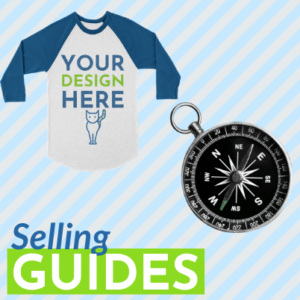Tips to Optimize Your Website’s UX
Once you build & launch your ecommerce store, you’re ready to serve customers 24/7. However, the features you implement on your site are playing salesman with or without you.
What you include on your site, from products to site design, is part of the sales process. Whether or not you have happy customers & convert sales is also a sign of how well your UX design is. If you’re looking to improve your customer experience, follow along with these UX optimization tips.
User-Friendly Navigation
Have you ever landed on a website & felt the overwhelming sense of chaos? Navigation is essential when it comes to UX design. If your customer can’t figure out where to go without feeling stressed, they’re unlikely to stay & shop on your site.
It should take seconds for your customers to find where to go whether they want to order a product or get in touch with you. Keep your menus noticeable, clear, and pleasing to the eye. Choosing link colors that contrast with text colors can also help make them more noticeable without overwhelming consumers.
Website Design
Just like your navigation, your website design should also be intuitive and easy to digest. Website design and navigation go hand and hand and complement one another to provide a winning user experience.
Focus on a clean, intuitive design that effortlessly guides consumers on what to do next. Platforms like Etsy are already built to be reasonably intuitive; however, you can use free Shopify templates or an experienced designer to create a site for you.
Whatever platform you use, remember that less is definitely more. Too many graphics & ads will make your customers feel your ecommerce store is cluttered & unorganized. Leave strategic white space for your customers to rest their eyes & quickly scan your pages.

Collect Customer Feedback
Your customers can provide valuable feedback about your site & how well it serves their needs. Send out a survey with a coupon code or entice with a free gift in exchange for honest feedback. Ask what they like the most about your site & what they like the least. You can also ask for volunteer beta testers to try out new site features & designs before releasing them publicly.
Optimize for Mobile
By 2023, ecommerce retail purchases are expected to rise from 14.1% to 22%. There are also nearly 2 billion digital buyers worldwide, and that number is only growing. That could be a windfall for serious ecommerce sellers, but only if your site is already optimized for mobile.
The good news is most ecommerce platforms, from Shopify to Etsy, are already optimized for mobile. But don’t leave it all up to chance. You can use the Google Search Console to test to see if your ecommerce site is mobile friendly.
The results will tell you if it’s easy to use & give you an idea of what your site looks like. Of course, just testing it on your own smartphone is also helpful. It’s also wise to see how your competitors’ sites look to figure out where they’re exceeding expectations & where they’re falling flat.

Improve Your Checkout Experience
Your checkout process is a crucial part of closing the sale. Research shows that 76 out of every 100 of your visitors end up abandoning their cart.
Walk through the checkout process yourself to see if there are hiccups or lag time with the process. Leaving customers to figure out the process can lead to loss of revenue & missed opportunities. Forcing customers to register an account instead of checking out as a guest can also cause a spike in abandoned shopping carts.
Once you’ve improved your checkout experience, some apps can help reduce abandoned carts. Shopify’s Abandoned Cart Recovery Hero can help simplify the process & increase your sales.
Improve Your Production & Fulfillment
This step happens off your ecommerce site but is still a crucial part of the user experience. Once your customers checkout & purchase their items, what happens next? Inconsistent production quality & slow fulfillment can tank your reviews & lose customers.
You can produce & fulfill your orders yourself or use a white-label & drop shipping service like CustomCat. We offer over 300 products & help sellers increase their sales while reducing their work & stress. Upload your designs, we’ll white-label the product of your choice & take care of the shipping process. You get to focus on growing your business instead of fulfilling orders.

Optimize your Site Speed
Site speed is only partly contingent on your customers’ Internet speed. It also involves how many photos, graphics, and elements on your site lead to a slow load time. This can be especially problematic for ecommerce stores that rely on high-resolution product images.
One option is to minimize the number of photos you need & rely on video instead. Upload product tutorials on YouTube to help raise your brand awareness & then embedded to your website. However, if you use Shopify or Etsy, your site speed should be consistent. If not, contact their customer support to find solutions to the issue.
Need help producing winning product photos without the cost or a ton of equipment? Get our Guide to Product Photography here.
Use Engaging, Clear Product Photos
With so many drop shipping options available, it’s tempting just to use images off the web & call it a day. However, part of optimizing your ecommerce store for UX is to use your own unique images.
Take quality photos of your products that engage the audience. Show how the product is used & different angles to showcase all of its features. Once you upload your pictures to your site, use alt data that briefly describes the product in a few words. You can also improve your SEO by including your focus keyword.

Stay Consistent
Consistency is often an overlooked part of UX. Keep your pages as consistent as possible with cohesive branding & navigation. Practicing consistency also makes it easy for your customers to get around your site, but it also makes your online presence more recognizable. Make sure your brand stands out on every page.
Regularly Audit Your Site
Optimizing your ecommerce store for UX isn’t a set it and forget it process. One of the most important aspects of UX optimization is checking your site regularly. Test the user experience from start to finish & ensure there are no surprises or less than intuitive features along the way.
What are your best tips for optimizing an ecommerce store? Let us know by leaving a comment below!



One thought on “Tips to Optimize Your Website’s UX”